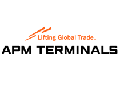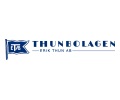How the Russia-Ukraine war is turning natural gas into the ‘new oil’

The Russia-Ukraine war is in the process of resetting the energy sector, with natural gas turning into a global and interconnected market, affected by events and dynamics that are far beyond its traditional physical scope, similar – to some extent – to what oil used to be for decades.
The European gas market – until recently nearly isolated, with prices largely depending on pipeline flow dynamics between Russia and Norway – can now be driven by anything across the world, from an LNG cargo diversion in the US to a river drying up in China and tensions over Taiwan.
This has immensely accelerated the gas market’s globalization, with analysts and market participants now calling it the “new oil,” referring specifically to its geopolitical aspect, as gas is traded very differently from oil and cannot compete in terms of liquidity.
“[Natural gas] is like oil in that it’s now a global commodity via LNG and has a much higher geopolitical significance because of the events of the past year. It is also now arguably a higher value product than oil,” said Glenn Rickson, S&P Global Commodity Insights head of European power analysis.
A gas trader operating in Northwest Europe agreed, saying “gas is the new oil, in a way.”
“For many years oil was the macroeconomic and geopolitical asset. Impacted by wars, monetary policies, overall health of the economy…while gas was more linked to physical and regional dynamics. This has changed,” the trader said.
Gazprom’s exit
The sharp turn has taken place as Europe is moving away from of its reliance on Russian natural gas imports and replacing it with LNG, which could be supplied from multiple locations, including the US, Qatar, Nigeria and many more.
Gazprom dominated the European market for decades and has monopoly over Russia’s pipeline gas. It has lost most of its LNG market share following Russia’s military invasion in Ukraine on Feb. 24, 2022.
LNG has a pivotal role in filling in the gap left by Gazprom’s exit both as a feedstock to produce chemicals, fertilizers and hydrogen, as well as a fuel for CCGTs (combined cycle power plants) for power generation.
The power market is highly correlated with natural gas – with nearly 20% of European electricity generated from burning gas last year – and is now being driven by global geopolitical factors.
No buffer
“Russian pipeline gas acted as a buffer for the global gas market because essentially if LNG was diverted to Asia, then Europe would just buy more Russian gas. That buffer has now gone,” said Dr. James Henderson, head of gas research at the Oxford Institute for Energy Studies.
LNG has become almost the entire source of flexibility in the market, with pipeline flows from Norway – now Europe’s biggest gas supplier – typically running at full capacity, and imports from North Africa having a limited upward potential.
“Therefore, LNG tightness or looseness becomes the most important factor in the market,” Henderson said.
LNG’s share in European gas supply rose to 33% in 2022 from just 19% in 2021, according to data from S&P Global Commodity Insights. This is likely to rise further this year, as LNG climbed 38% in March after a record high of 40% seen in February, and with TTF, European LNG and Asian LNG prices showing increased correlation.
This data still includes Russian LNG, with European Commissioner for Energy Kadri Simson recently urging companies not to sign new contracts.
‘On a knife’s edge’
European gas and power traders have had to adapt to this new reality, as decades-old market rules and dynamics stopped working shortly after Russia’s invasion in Ukraine.
“[My job] is very different now. It’s basically all LNG on the supply side, whereas it was all pipeline before,” a Germany-based gas trader said, adding that storage dynamics have also changed dramatically.
Before the war, gas storages were essentially a single-period problem. Traders largely had confidence that whatever happens, stocks will be high at the start of the European heating season and low by the end of it.
Now, with almost limitless Russian gas at relatively competitive prices out of the equation, traders run the risk of not having enough supply to refill storages.
“The level of volatility is also completely different, so position sizing has changed a lot. Previously, Eur1/MWh was a huge move. Now, Eur1/MWh is noise… Tail risk is much bigger, as we are always balancing on a knife’s edge,” the German trader added.
It is not just German traders who have to adapt: the rest of the world could now also be driven by regional European issues.
“It’s arguable that the effect goes both ways,” Rickson said. “For example, the French nuclear and hydro [shortage] last summer lifted EU gas demand, which in turn helped support LNG prices and limited demand for imported gas in Asia and elsewhere.”
A comeback
One could argue that natural gas being a new oil is a bit of a stretch, yet all market experts agree on one thing: Russian gas in Europe as we knew it is over for good.
That said, limited quantities of Russian gas may still find their way back to Northwest and Central Europe. Several Eastern and Southeastern European countries continue to buy supplies from Gazprom post-invasion.
“We won’t see ‘Putin’s gas’ back in Europe. [But] I think Russian gas could rebound a little bit in… an outcome which was satisfactory to Ukraine and to [Kyiv’s] European allies,” Henderson said, adding that full capacity is unlikely to come back, as Europe “is signed up for LNG anyway.”
Indeed, Europe has been investing heavily into LNG infrastructure even before the invasion of Ukraine, with the pace picking up as the war escalated. Germany – until recently the most reliant on Russian pipeline gas – now has plans to build at least six floating storage and regasification units and three shore terminals, which will eventually replace FSRUs.
This way, Russian gas could become a part of the regional system in the future, but at a much smaller scale than ever before. The European gas market is bound to preserve its global status.
Source: Platts

 Hellenic Shipping News Worldwide Hellenic Shipping News Worldwide, Online Daily Newspaper on Hellenic and International Shipping
Hellenic Shipping News Worldwide Hellenic Shipping News Worldwide, Online Daily Newspaper on Hellenic and International Shipping





















 PG-Software
PG-Software